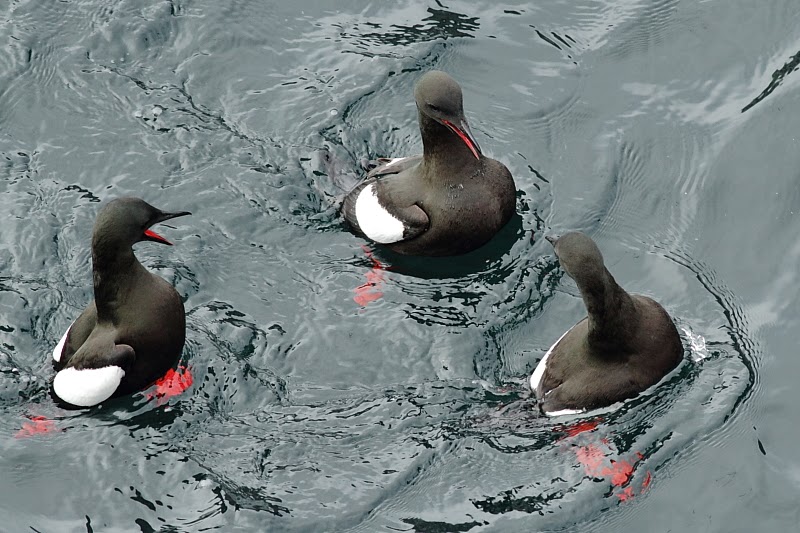I got the evening ferry out to Inishbofin on Thursday evening to get a full day out there the following day. The first ferry doesn't arrive out until 12 o'clock and leaves again at 5 so trying to get anything done out there is always done in a rush. I managed to get to most of the spots I had hoped to, it was around an 18km round walk, two sore feet by the end of the day! The sea cliffs are the real attraction for me at this time of year on Inishbofin. Two of the three Raven nests were successful with two and three large chicks respectively. This is a little on the low side as the average clutch size of chicks this year was around four chicks. The female Peregrine was also around but doesn't appear to have laid eggs yet which she really should have by now. The Peregrines here never seem to be very successful for some reason. It certainly can't be the lack of food so it's hard to know why? I also had probably three nesting pairs of Chough around the island, even managed to see part of one of the pairs nest wedged into a crack in a cliff.
There was a Black-throated Diver giving good views with around 20 Great northern Divers off the sandy beach at Westquarter. I think this is the first proper island record for this species. Anthony McGeehan has seen one from the ferry in the past though. Also in the same area were two female Merlin which were seen interacting with each other. One actually called as it flew over me. These are presumably migrants, possibly Iceland bound? Males which are always first on the breeding grounds (that is if they ever leave) should be on territory for a month at this stage. Quiet on the migrant front 3 Chiffchaffs, 1 Blackcap and a few Wheatears including one female Greenland type.
 |
| Fulmar |
 |
| Fulmar |
 |
| House Sparrow |
 |
| House Sparrow |
 |
| Rock Pipit collecting nest material. Note the pink flush to the throat and the sparse underpart streaking which are features of littoralis Scandinavian Rock Pipit. However it did lack a noticeable whitish supercillium. |
 |
| Rock Pipit. This shot was taken in the rain so the exposure is a bit off but again note the pink coloration to the breast, bluish tones to the head, sparse underpart streaking and white supercillium. This would probably be called littoralis by some. This bird seemed to be paired up with another much more typical looking petrosus Rock Pipit, so is this natural variation amongst the local population or what?? |
 |
| Skylark |
 |
| Shag nesting on sea stack. |
 |
| Sanderling moulting some of the wing feather tracts into summer plumage. |
 |
| Typical looking local female Wheatear |
 |
| Female Wheatear, most likely the leucorhoa Greenland race, note the colour tone difference between the two. |
 |
| Three male Wheatears, probably migrant birds. All three fairly typical looking so probably not heading too far North. |
 |
| Puffin and Razorbill skulls. The Puffin skull was a little mangled, I think the lower mandible has been twisted upside down. That's the upper mandible of the Puffin on the left which was detached. |
 |
| Dead adult male Otter. Not sure what happened to this poor fella. Found in an isolated spot so certainly not a road casualty. It didn't appear to be a young animal as it was missing some front incisors and the canines were worn. |
 |
| Front pad of the Otter. |
 |
| Duach beach, some erosion here same as all sandy beaches on the West coast after the winter storms. |
 |
| There used to be a lovely stone pier leading out the derelict fish curing station here, not anymore after the storms! |
 |
| Prísún/The prison, an impressive blow-hole land bridge. The bigger rocks washed up by the sea probably weigh a few tonnes each. |
 |
| Davillaun |
 |
| Inishturk |

































































